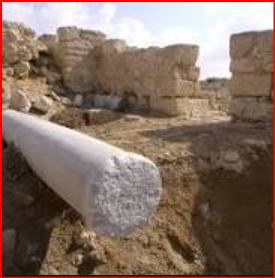Egypt lies
North East in the African continent, its history goes back to Biblical times; with Pharaohs fighting for land in the fertile
Nile River! There are many, year old Monuments here: Including: the Pyramids of Giza and the Great Sphinx; the Karnak temple, with its infamous hieroglyphics and the Valley of the Kings Tombs! The capital is Cairo, it has a number of very interesting landmarks. One being the infamous
Egyptian Museum, with many artefacts found in the
Tombs of the Pharaoh's!
Separated from the
Middle East by the
Red Sea, a very important trade route! From 1852, Britain kept an increased presence in northern Egypt to maintain the overland
trade route to India and to oversee the construction of the Cairo–Alexandria railway, the first British railway built on foreign soil.
Alexandria is a major city in the
Mediterranean world. It has been the capital of Egypt, from its founding by
Alexander the Great in 332 BCE, until its surrender to the
Arab forces led by, Amr ibn al-ʿĀṣ, the Arab conqueror of Egypt. (died 663, Al-Fusṭāṭ, in Egypt). Shortly thereafter, French investors financed, the construction of the Suez Canal to connect the Mediterranean and Red Seas. Isma’il Pasha sold Egypt’s shares of the Suez Canal Company to Britain in 1875 in the wake of a financial crisis. Dissatisfaction with
European and Ottoman rule led to a nationalist revolt in 1879. The British military occupied Egypt in 1882 to protect financial interests in the country, culminating in a violent war. Britain won, restored the Khedival authority in Cairo, and established a ‘veiled protectorate’ over Ottoman-Egypt until the
First World War. The British occupation saw an increase in archaeological fieldwork, tourism, and irrigation projects to boost
Egypt’s cotton production and exportation. Egypt declared independence in 1922, although Britain did not withdraw all its troops until after the
1956 Suez Crisis.
They have their own derivative of the Pound, from British rule- the
Egyptian Pound!
A team of archaeologists from the University of Warsaw announced the discovery of a previously unknown Christian Settlement in Egypt. The site, known as ancient Marea and located about 25 miles Southwest of
Alexandria, was built in the third Century B.C.E., shortly after the conquest of
Alexander the Great. The newly discovered portions of the site, however date to the sixth Century C.E., when Marea served as a way station, for
Christian Pilgrims traveling to Abu Mena, the location of the tomb of the martyr Menas of Alexandria, who died in 296 C.E. (LINK IN FURTHER READING)
Abu Mena (Egypt)
Abu Mena was inscribed on the UNESCO World Heritage List in 1979 serving as an outstanding example of a pilgrimage site, cradle of Christian monasticism. The site was placed on the List of World Heritage in Danger in 2001 following concerns due to alarming rises in the water table caused by irrigation methods of surrounding farms and the collapse of several overlying structures. In 2021, an ambitious drainage and pumping system significantly reduced groundwater levels, reducing threats to stabilized the archaeological structures.The conservation plan, developed in 2024 with the support of UNESCO’s World Heritage Fund, has enabled the establishment of appropriate strategies and greater involvement of local communities. (As seen in the picture). The church, baptistry, basilicas, public buildings, streets, monasteries, houses and workshops in this early Christian holy city were built over the tomb of the martyr Menas of Alexandria, who died in A.D. 296.
